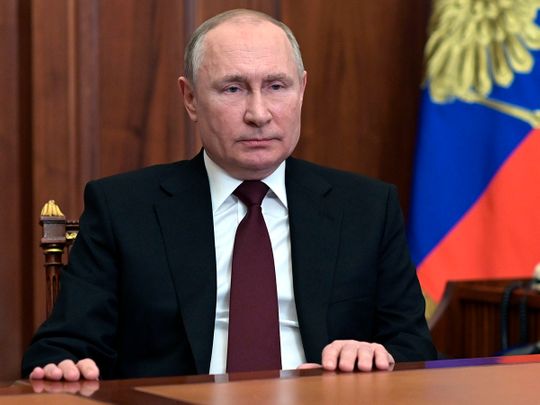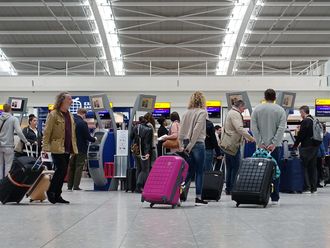
Russian assets nosedived as military attacks across Ukraine prompted emergency central bank action and investors braced for the toughest round of Western sanctions yet, wiping out more than $250 billion in stock market value.
The ruble sank to a record low and stocks collapsed 45 per cent - their biggest-ever retreat. Russian Eurobonds plummeted, pushing some into distressed territory. The Bank of Russia said it will intervene in the foreign exchange market for the first time in years and take measures to tame volatility in financial markets.
The military attack on Ukraine cast a pall over global markets and sparked another bout of global risk aversion.
Russian assets took the main blow after President Vladimir Putin ordered an operation to “demilitarise” the country, prompting international condemnation and a US threat of further “severe sanctions” on Moscow.
“Significant overshooting is possible, and the dollar-ruble at 100 certainly is well in range,” said Commerzbank AG strategist Ulrich Leuchtmann. “I don’t think that interventions will be the main instrument of choice. They can only prevent extreme overshooting. Rate hikes have to follow soon.”
Read more
- UAE airlines cancel services to Ukraine, while Air India flight turns around after conflict erupts
- Airlines advised to stop flying over all of Ukraine
- Russia attacks Ukraine: Oil rises above $105 for the first time since 2014
- Ukraine-Russia crisis: Global stock markets, crypto crash
- In pictures: Dramatic scenes of chaos as Russia attacks Ukraine
- Ukraine-Russia crisis: Ukraine hit by more cyberattacks, destructive malware
- Explainer: A look at toughest US sanctions facing Russia
The Russian central bank made no mention of raising interest rates, but said it will provide additional liquidity to banks by offering 1 trillion rubles ($11.5 billion) in an overnight repo auction. Policy makers have increased the benchmark rate by 525 basis points in the past 12 months to tame inflation.
Russia’s sovereign bonds plummeted, taking some to distressed levels. Ukraine’s 2033 dollar debt dived, lifting the yield to 88 per cent, while the local currency market was suspended and limits were imposed on daily cash withdrawals.
The ruble slumped as much as 9.4 per cent in local trading to 89.60 per dollar. Currency options see a more than 50 per cent probability of the ruble touching 100 per dollar in the second quarter.
So far, the response by the central bank is more measured than eight years ago when the conflict in Ukraine first flared.
Policy makers raised rates on the first working day after Russia’s parliament approved the use of its military in Ukraine in 2014. With oil prices falling later in the same year, the Bank of Russia ended up lifting its key rate to as high as 17 per cent to defuse a currency crisis.












